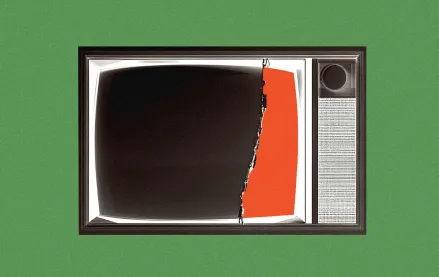Save 50% on a 3-month Digiday+ membership. Ends Dec 12.

This article is a WTF explainer, in which we break down media and marketing’s most confusing terms. More from the series →
It’s no secret that the creator economy has hit critical mass. Advertisers are getting more specific in their asks — whether it be more meticulous metrics or carefully curated creators — to have more control over their influencer partnerships and content creator deals.
Brands are turning to creator-generated content (CGC) as a means to solve for some of this. Think of it as another factor in the already fragmented influencer marketing landscape.
CGC is creator content commissioned by a brand that lives on the brand’s owned-and-operated channels — like user-generated content but carefully curated and owned by the brand. With CGC, brands can say exactly where the content lives and for how long. That control is something marketers have been pushing for as the creator economy continues to become a more standardized media channel.
“Creator is becoming the focal point of all advertising,” said Krishna Subramanian, founder and CEO of influencer marketing firm Captiv8. “It’s now because of that you want that creator to be that centerpiece whether it’s print, billboards, TV, in-store — not just their social distribution.”
How does CGC work and how is it different from user-generated content (UGC)?
It’s like user-generated content with a twist. Instead of a marketer organically discovering influencer or creator content about their brand, marketers are hiring creators to generate that content on their behalf. Brands then set campaign briefings and goals.
That content could live on the creator’s social channels, but not necessarily. It’s more likely and pertinent, per agency execs, that it lives on the brand’s owned-and-operated channels, allowing the brand to track metrics.
“You’re hiring the influencer for their skill in creating this content but not for their name,” said Danielle Wiley, founder of influencer marketing shop Sway Group. “You’re really using them as actors and creative directors, and not as influencers.”
This seems like a freelance content producer role?
Close. CGC revolves around content creators and influencers that live on social — although, not necessarily based on audience or following size — as opposed to a general content producer. It’s a subtle nuance, but one worth acknowledging, according to Noah Eisemann, global managing director of creator marketing at VML. Similar though to a producer, pricing can range depending on the deliverables and influencer or creator.
“It’s been worth labeling them something different than just freelance content producer. It’s more calling them a true content creator,” Eisemann said. It speaks to the budding categories of creators that has expanded well beyond influencer vs. creator.
CGC is lo-fi style content that resembles influencer content. Per Wiley, “It feels like influencer content but that influencer is not posting it to their own audience. They are creating it and then turning it over to the brand to own outright.”
Who owns the content? The brand or the influencer?
The brand. The general rule of thumb is if the brand commissioned it, the brand owns it. Or as Wiley puts it, “[The brand owns] it completely, so you can run it on paid 10 years straight if you want.”
Now, how that’s paid for can vary from a one-time flat rate or a retainer fee to an hourly rate or pay based on deliverables, per the agency execs. Pricing ranges widely depending on deliverables and who the influencer or content creator is that’s being commissioned for the work. (None of the execs Digiday spoke with provided exact figures.)
So who’s asking for CGC?
According to Wiley, brand clients are looking for a more hands-on approach to the creator economy (perhaps proven by the creator-fueled boom happening in the M&A space). And as Captiv8’s Subramanian stated, influencer marketing and the creator economy has seeped into other marketing channels, like television, in-store activations and out-of-home billboards.
Brands often look to invest in CGC, according to the three influencer marketing agency execs Digiday spoke with for this story, when they want to stretch influencer marketing dollars further, work around hiring a full production crew and leverage the authenticity of creators.
“What’s happened over time is influencer content is performing so well that brands are now holding it accountable as a channel for full-funnel, for sales, for commerce,” Subramanian said.
More in Marketing

Agencies push curation upstream, reclaiming control of the programmatic bidstream
Curation spent much of this year in a fog, loosely defined and inconsistently applied. Agencies say they plan to tighten the screws in 2026.

‘A trader won’t need to leave our platform’: PMG builds its own CTV buying platform
The platform, called Alli Buyer Cloud, sits inside PMG’s broader operating system Alli. It’s currently in alpha testing with three clients.

Why 2026 could be Snap’s biggest year yet – according to one exec
Snap’s senior director of product marketing, Abby Laursen talked to Digiday about its campaign automation plans for 2026.








